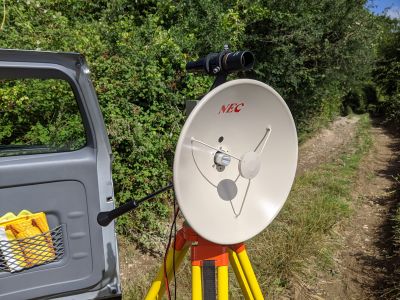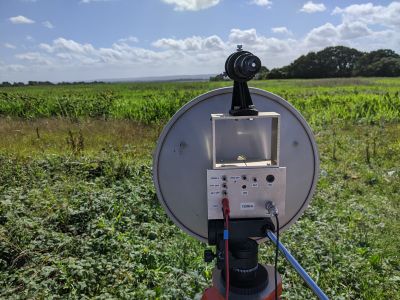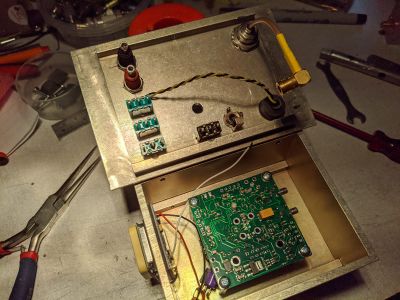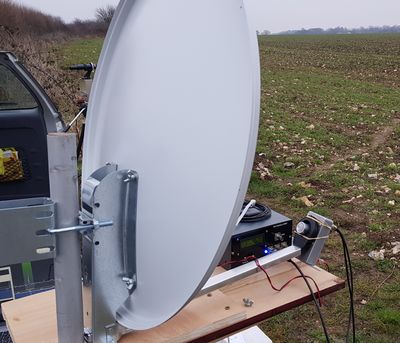122 GHz
The UK 122 GHz allocation runs from 122,250-123,000 MHz. The band is a secondary allocation for the amateur service (no satellite allocation) and suffers from significant atmospheric loss. However as it is also designated for licence-exempt short range devices, an increasing amount of commercial equipment is becoming available for re-use by amateurs.
Contents
Band Plan
There is no formal RSGB band plan but current activity seems to be using 122.4GHz on transmit and IF frequencies in the 2m or 70cm bands.
Some additional information along with some 134 & 248 GHz information does feature on the RSGB mmWave Page
Propagation
The 122 GHz band suffers from significant Oxygen losses as it is a harmonic of the more well known 60GHz oxygen resonances. This coupled with humidity can lead to high overall atmospheric losses compared to the 47 and 134 GHz bands. Despite this, amateurs have had contacts on 122 GHz ranging from at least 20km in the UK, to over 100km in Australia. The current UK DX record is almost 36km, set on 7-April-2021.
Beacons
There are a few personal beacons but currently no GB3xxx class systems
122 GHz Equipment
Equipment for 122GHz traditionally uses conversion to/from lower bands. However the latest advances in silicon technology have also been harnessed by amateurs inc 122 GHz radar sensor chips proving to be very popular as the basis for CW/SSB kits/modules.
122 GHz Kits
- Groups.io: The 122GProject- User group for the VK3CV 122GHz transverter project kit
- Video: 122GHz on UKuG Youtube
Here is one implementation of the VK3CV project courtesy G1EHF, mounted behind a surplus 50GHz link dish:
122 GHz Antennas
Many small horns and dishes are readily usable. The very high gains create beamwidths of less than a degree which necessitates careful alignment and pointing. Thus it is not unusual to see some equipment having co-mounted rifle-sights to assist setting up for QSOs.
Simple conical horn antennas can be made from cake-icing nozzles and the PME range of stainless steel ones (readily available from eBay or local kitchenware shops) will give a gain of about 21dB at 122GHz. All the nozzles in the range have an aperture of 16mm and only differ in the diameter of the throat (corresponding to the diameter of the icing thread produced). The PME 1.5 nozzle is a good starting choice for 122GHz.
Regular satellite TV offset dishes have been found to be effective too. This set up is using a regular 60cm dish fed by the on-board 20dB horn:



